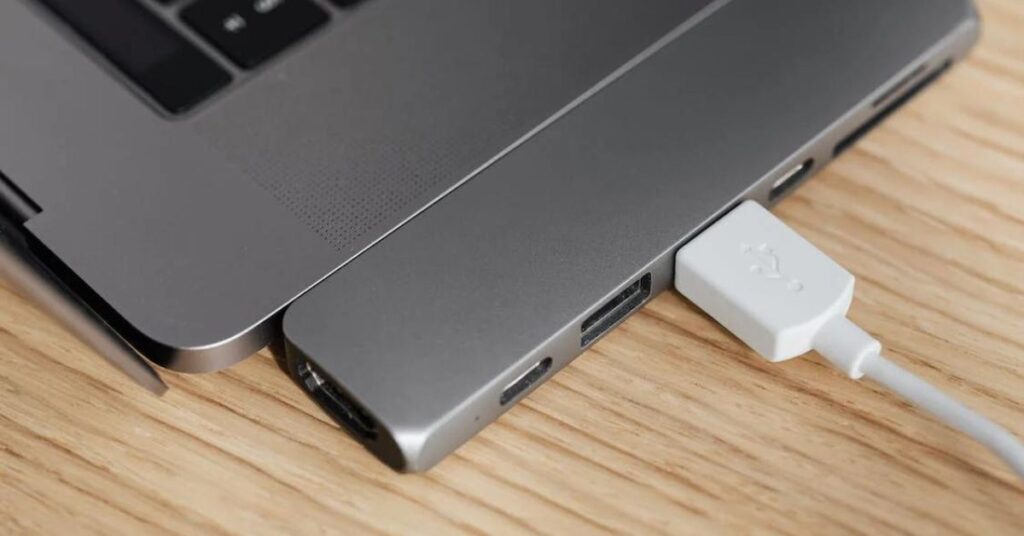Picture your computer as a bustling city, with the motherboard at its core—a vital coordinator in this electronic metropolis. The motherboard acts like a traffic controller, managing the smooth flow of information between the processor, RAM, graphics cards, and storage. What is Motherboard’s role in data transfer?
Think of it as the central hub that ensures all these components communicate seamlessly, making your computer run like a well-oiled machine. Understanding this role is the key to demystifying how your computer processes and transfers data.
Table of Contents
Why is Data transfer important in computers?
- Enables communication between hardware components.
- Essential for executing instructions and running programs.
- Vital for real-time processing in applications like gaming or video editing.
- Facilitates storage, retrieval, and management of data on storage devices.
- Allows connectivity with external devices through peripheral ports.
- Forms the foundation for network communication and internet connectivity.
- Enables user interaction with input devices like keyboards and mice.
- Overall, it is crucial for the functioning, performance, and usability of computer systems.
Overview of the Motherboard

The motherboard is the command center of your computer, the unsung hero that brings everything together. Picture it as the main hub where all the vital components connect and collaborate. Physically, it’s a flat board with circuits, slots, and ports. But its significance goes beyond its appearance. The motherboard is the backbone that links the brainy processor, the memory that helps your computer think fast (RAM), and the various expansion cards and storage devices.
Think about the motherboard to be the conductor of a symphony of data exchanges between various instruments in an orchestra. It’s the dynamic force that makes it possible for your computer to work as a cohesive unit rather than just a static piece of hardware. So let’s take a closer look at this key component and discover how it controls information flow to make sure your computer runs efficiently.
Components Involved in Data Transfer

The motherboard is like the town square where different elements of your computer meet and share information.
Here’s a quick tour of the key players in this data dance:
1: Processor (CPU)
- Role in data processing: The CPU, or central processing unit, is the brain of your computer. It handles data processing and executes instructions, making it the powerhouse of your system.
- Communication with other components: The CPU doesn’t work in isolation. It communicates with other components through the motherboard, exchanging information and instructions to ensure tasks are carried out efficiently.
2: Memory (RAM)
- Temporary data storage: Random Access Memory (RAM) serves as a temporary storage space for data that the CPU needs to access quickly. It’s like the computer’s short-term memory, holding information actively in use.
- Interaction with the CPU: The motherboard facilitates communication between the CPU and RAM, ensuring a smooth exchange of data. This interaction is vital for the computer’s real-time performance.
3: Expansion Slots
- Purpose and types: Expansion slots on the motherboard provide room for additional components like graphics cards, sound cards, and other peripherals. They come in various types, allowing users to customize and enhance their computer’s capabilities.
- Connection with peripherals (e.g., graphics cards, sound cards): These slots act as connection points for expansion cards, enabling them to communicate with the motherboard. Graphics cards, for instance, plug into these slots to handle visual processing.
4: Storage Interfaces
- Types of storage connectors (e.g., SATA, M.2): The motherboard features different types of storage connectors like SATA and M.2, each catering to specific storage devices. These connectors determine how data is transferred between the motherboard and storage.
- Data transfer with storage devices (hard drives, SSDs): Storage interfaces allow seamless communication between the motherboard and storage devices, such as hard drives and Solid State Drives (SSDs), facilitating the retrieval and storage of data.
5: Peripheral Connectors
- USB ports, audio jacks, etc.: The motherboard is equipped with various peripheral connectors like USB ports and audio jacks. These connectors serve as gateways for connecting external devices to the computer.
- Facilitating data transfer to/from external devices: External devices, such as USB drives or headphones, connect to these ports for data transfer. The motherboard ensures a smooth flow of information between the computer and these peripherals.
6: Data Buses
- Front-side bus, system bus, etc.: Data buses are communication highways on the motherboard, like the front-side bus and system bus. They act as conduits for data to travel between the CPU, memory, and other components.
- Communication channels within the motherboard: These buses provide pathways for data to move within the motherboard, ensuring effective communication between different parts of the system. They contribute to the overall efficiency of data transfer within the computer.
Functionality and Coordination
1: Centralized data transfer hub:
The motherboard coordinates the efficient flow of data between different components by acting as a centralized hub for data transfer. It guarantees effective data flow, akin to a traffic control center overseeing vehicular traffic in a city.
2: Coordinating communication between components:
Think of the motherboard as a skilled mediator, facilitating communication between components like the CPU, RAM, expansion cards, and storage devices. It ensures that each part understands the others, promoting harmony in the functioning of your computer.
3: Enabling the computer system to function as a cohesive unit:
When all the parts come together perfectly, magic happens. This synergy is made possible in large part by the motherboard, which enables your computer to function as a single, cohesive unit rather than as a disjointed collection of parts. It guarantees that work is completed effectively and without interruption.

Without a motherboard, it is possible for data transfer?
No, without a motherboard, it is not possible for data transfer within a computer system. The motherboard serves as the central hub that connects and facilitates communication between various essential components, including the processor (CPU), memory (RAM), expansion cards, storage devices, and peripheral connectors. These components rely on the motherboard to exchange data and instructions.
Data buses and connectors, among other channels, are provided by the motherboard to allow data to move between the various components of the computer. The infrastructure necessary to facilitate data coordination and transfer between the CPU, memory, and other hardware components would not exist without the motherboard. Data transfer between components would be virtually nonexistent as a result, and the computer system would be unable to operate as a cohesive unit.
What is Motherboard’s role in data transfer?
The motherboard is like the central command center of a computer. Its main role in data transfer is to serve as a hub that connects and facilitates communication between vital components such as the processor (CPU), memory (RAM), storage devices, and peripherals. It provides pathways and interfaces for these components to exchange data, ensuring a seamless flow of information throughout the system. Essentially, the motherboard enables different parts of the computer to work together, allowing for efficient data transfer and overall system functionality.
FAQ
How does the motherboard enable communication between components?
The motherboard facilitates communication through various means, including data buses, expansion slots, and peripheral connectors. These components create pathways for data to travel between the CPU, memory, storage, and other hardware, allowing for seamless data transfer.
What happens if there are issues with the motherboard’s role in data transfer?
Issues with the motherboard can lead to communication breakdowns between components, causing system instability, slow performance, or malfunctions. Troubleshooting and resolving motherboard-related issues are crucial for maintaining optimal data transfer and overall system functionality.
Can upgrading the motherboard improve data transfer speed?
Upgrading the motherboard can potentially improve data transfer speed, especially if the new motherboard supports faster data transfer technologies or has additional features that enhance overall system performance.
Does the type of storage interface on the motherboard affect data transfer rates with storage devices?
Yes, the type of storage interface (e.g., SATA, M.2) on the motherboard can significantly impact data transfer rates with storage devices. Modern interfaces like M.2 generally offer faster transfer speeds compared to older technologies like SATA.
